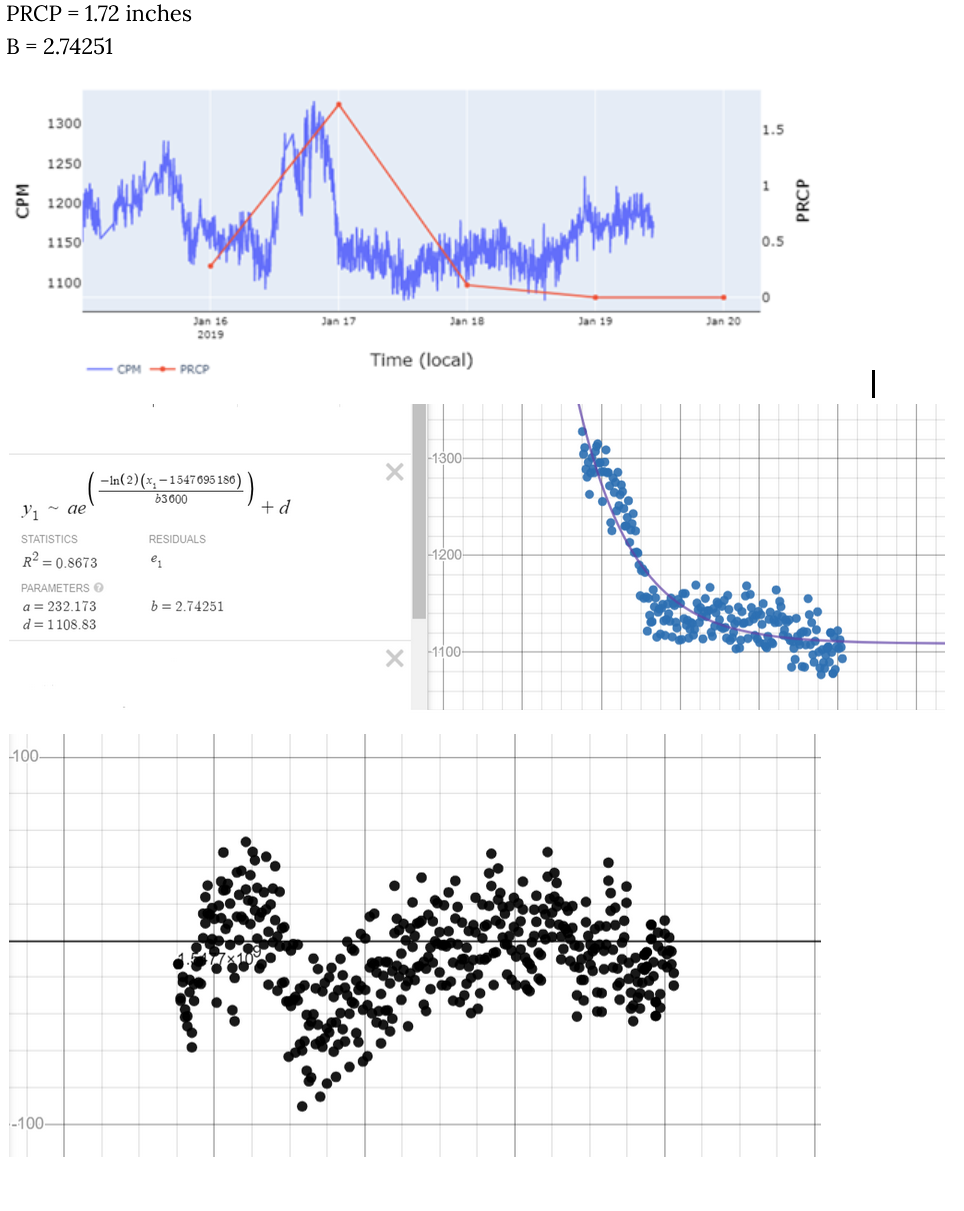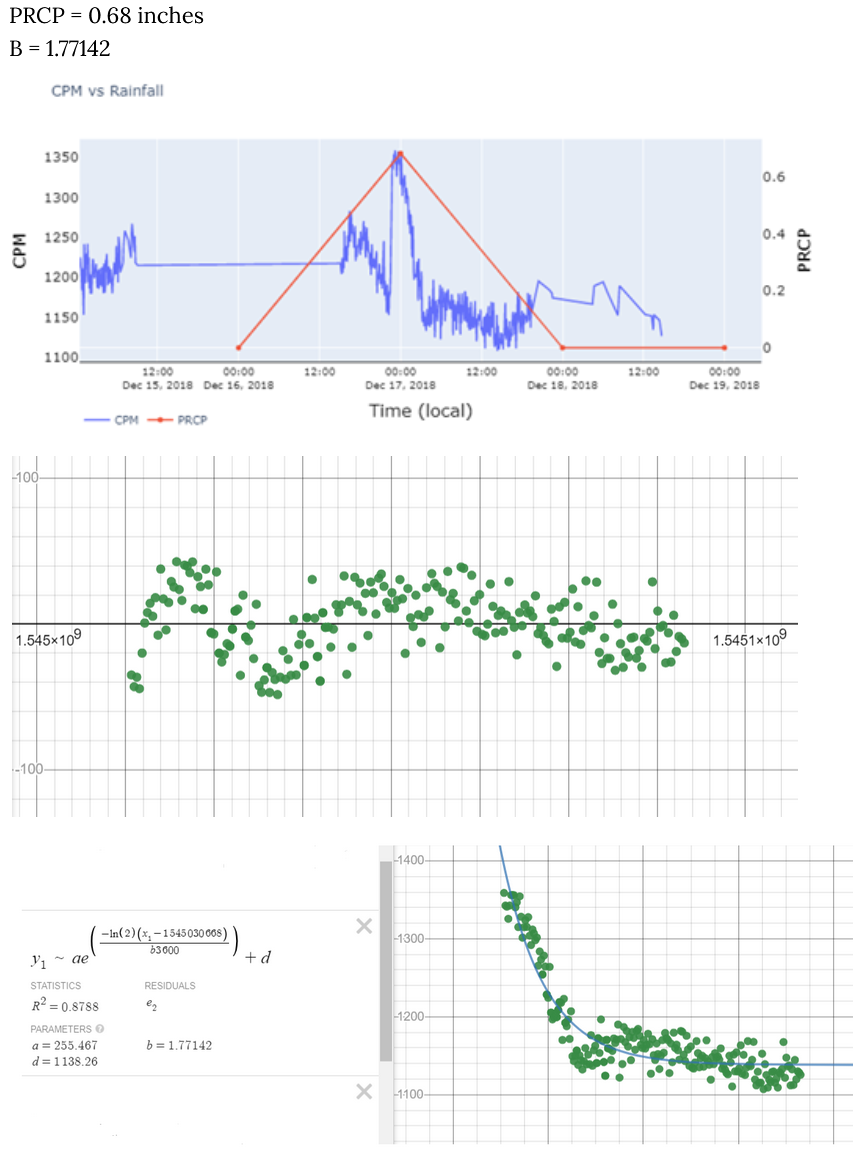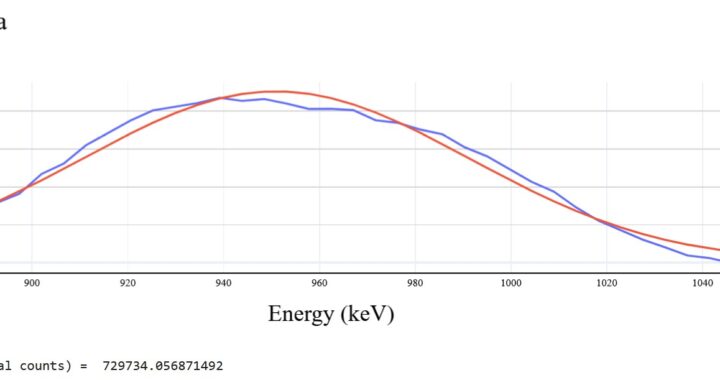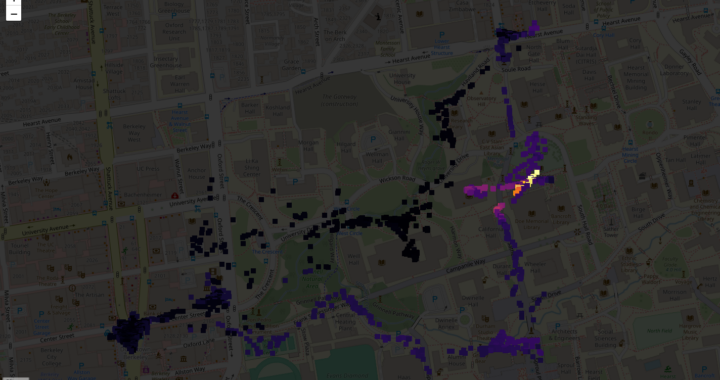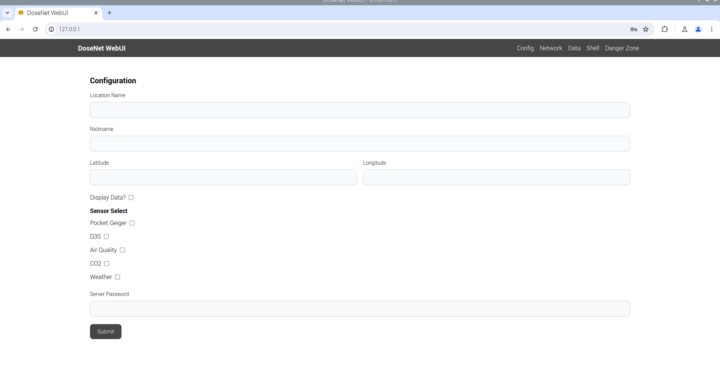Overview
Brian Fu joined the DoseNet team this Summer, and has continued working with us during the academic year. He describes his time and work with us over the summer in a report, and we look forward to future updates on his ongoing contributions. Brian took on some of our plentiful data analysis work, focused on validating the expected radon and precipitation correlation using radiation data from our radiation spectrometers and rainfall data from the National Climatic Data center. He learned a lot and produced many great visualizations of the positive correlation between radiation levels and rain, and even provides extensive explanation of the phenomena and his methodology. Here is what he had to say about his work over the summer!
Introduction
Hello! This summer I had the opportunity to look at data collected by the DoseNet systems. After playing around with it for a bit, I realized I was more interested in the data analysis and research, rather than focusing on writing a new program or helping with the technical part of things. This led me to decide to do research on the relationship between rainfall and radiation levels in the air. My decision was based on multiple reasons, but the primary one would be that I had previously learned about weather and rainfall in my High School Chemistry class, so I thought that I would be more familiar with regards to this topic. With this project in mind, I wanted to figure out what would generally happen to the radon levels in the air when there is a period of rainfall and if there was any correlation between them. If there was, I also wanted to figure out if there were any repeating patterns we could look for whenever there was rainfall.
Data Acquisition
For my project at least, the data acquisition wasn’t the smoothest, but it ended up working. Of course, because I am studying the relationship between rainfall and radon levels, I would need to find precipitation data and the radiation data for the same location. As we already had the radiation data[1], I needed to find a resource that would also give me data for rainfall. I ended up using the data from the National Climatic Data Center[1], which is a government resource provided for everyone to use. So the way I went about doing this is at first finding a location where there was ample radiation data collected over at least a year, and see if there were any government weather sensors located around the location where the DoseNet sensors were. At first, I was looking at the general cpm data collected in the UC Berkeley Locations, but soon I moved to Pinewood School Outside as the data there was more accurate. Another driving factor in this switch was that the sensor was outside, which would give me a more accurate representation of what was actually happening in the air. Luckily, there were a few government weather sensors close to the Pinewood School, so I could use this location without too much problems. The dates I looked at started February 2018 and ended in April 2019, giving us a little more than a year’s worth of data.
At first, I wasn’t sure where to start my project, so I made a google map in which I put the locations of all of the DoseNet sensors and the dates where cpm data was collected. Then, I started to analyze Berkeley radiation data in comparison to rain. However, there didn’t seem to be much of a correlation, and the same applied to some of the other locations I looked at as well. It was here that I got the suggestion to work with Pinewood Outside D3S data, as it was probably better to use and more accurate. From here on some research had to be done. After looking at a couple, I decided to follow a research paper that had already detailed the relationship between rain and radiation[1].
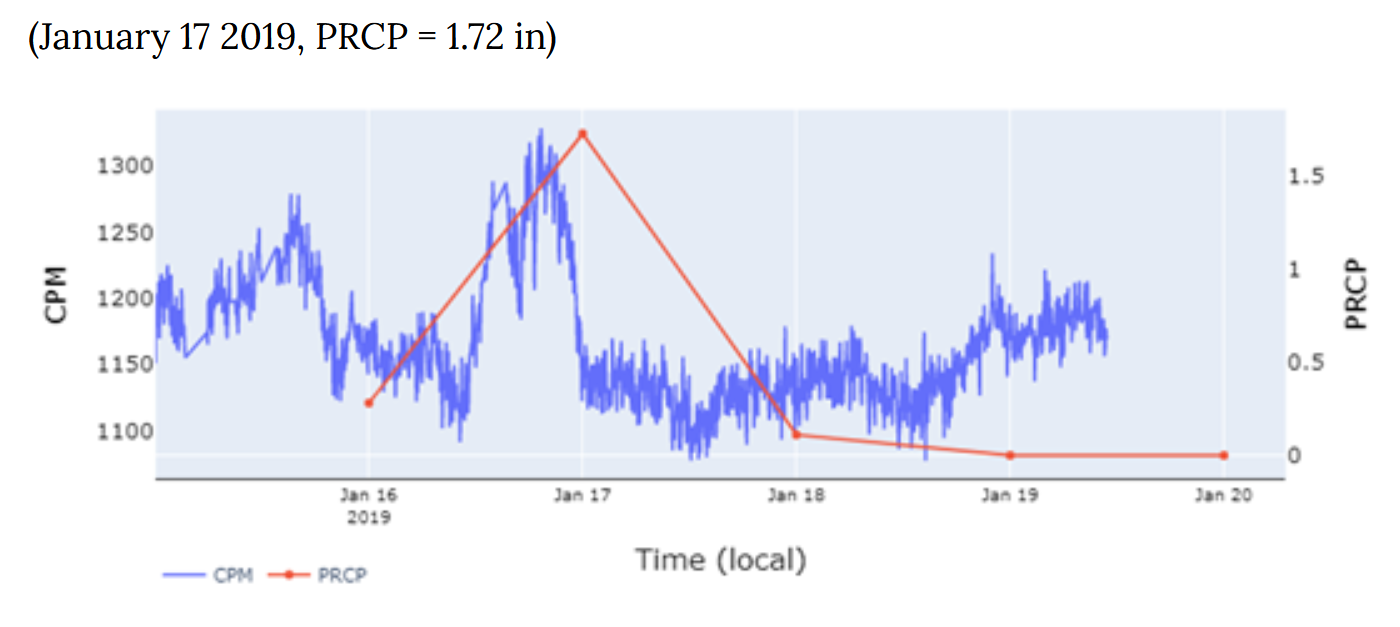
Raw data of rainfall with dates and cpm (radiation counts per minute)
From this I learned that whenever there was a rain event I could expect to see a sudden spike in the radiation data. This would be caused by the radon decay products in the atmosphere caught by the rain then brought to the ground. Then we would expect to see the cpm in the air exponentially decrease as the radon products would decay. So my next steps were to put the Pinewood Outside rainfall data and cpm data side by side and zoom in on certain days where there was rainfall. After that was done, I could work on analyzing what was really going on during the rain periods. I ended up switching to using Desmos as a plotting tool because the python code got a bit complicated, but for now Desmos does work a little in helping me find statistical data, although the work is a bit manual. All the code I wrote would be on Cocalc and Github and I will comment on it nicely so people can read and understand it.
I think the key results from my work is that I was able to find a consistent pattern between how the cpm changed when there was a rainfall event at a certain date. I was able to find significant spikes in cpm during days of rainfall and an exponential decrease shortly thereafter. I’ll include a few simple examples of cpm whenever there was a rainfall event, so you can see the exponential curve and fitting.
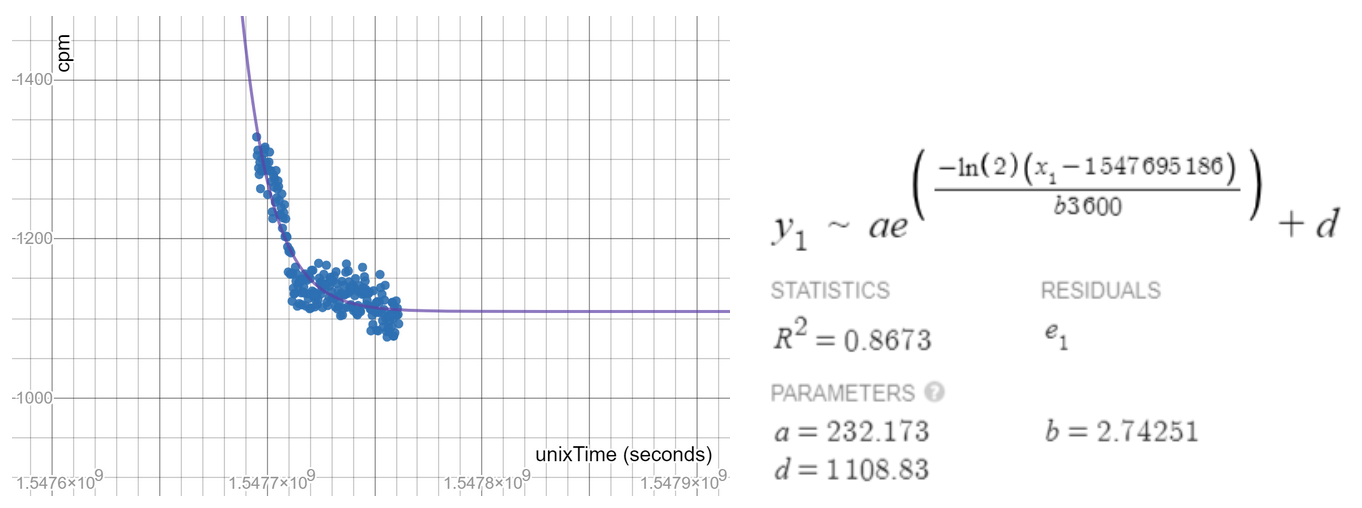
Cpm spiking and decaying after rainfall
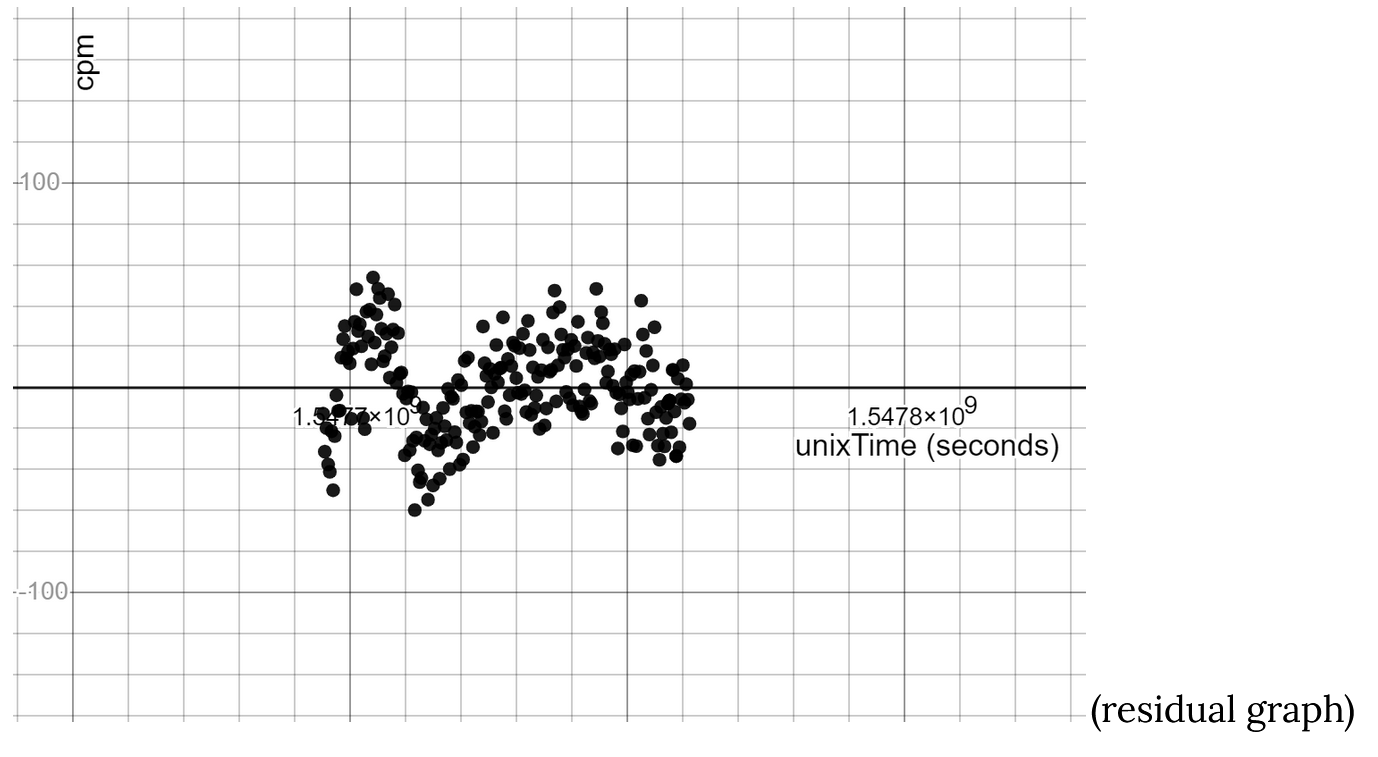
Residual cpm following decay (from left graph)
Interestingly enough, the b values for all the graphs were not the most similar, although if the rain brings down the same radioactive material from the atmosphere the b value should stay consistent throughout. I have a few theories about why this is, such as the way I collected the data might not have been consistent throughout or because of multiple rain events in a short amount of time. But here is the graph of the amount of rain in a certain day vs the resulting b value of the exponential decrease.
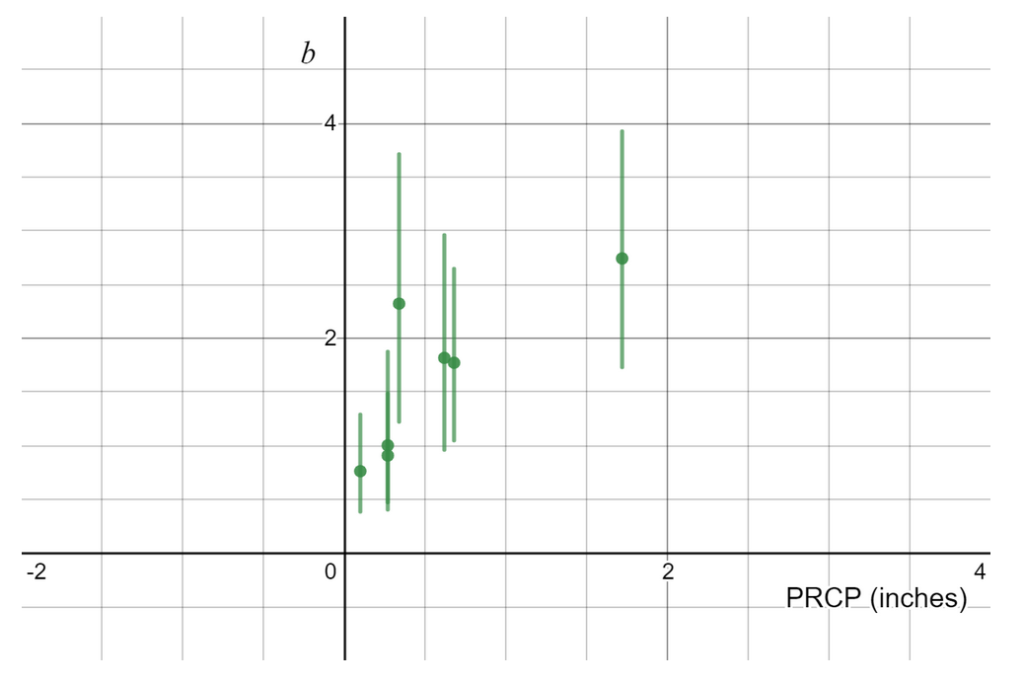
precipitation vs b-parameter
Conclusion
My interpretation of the data analysis I did was that there is a known correlation between precipitation and radon that is expressed in our data, so I can confidently say that I am satisfied with what I have done during this summer. My work didn’t go as I thought when I first started the project. When I first started, I thought I would just graph the rainfall data and cpm data between many locations and look for a correlation there. However, I ended up “zooming” in at one set of data and examining it more closely. Now that I think about it, doing so is definitely more meaningful and much more pragmatic. There were of course some challenges I faced along the way. I had never done data analysis before, so although starting to do it was not easy, once I got the hang of it I found that it was actually kind of fun and interesting. Other challenges included finding rainfall data and averaging the data, but with time I was able to get through all those barriers. The next steps for me would probably be to work on more of the statistical side of the current analysis and make the whole process of finding rainfall data and comparing it to radiation more automatic.
We were very lucky to have Brian work with us this summer! Combining data from other publicly available systems with ours from positions with enough locational overlap produced some great visualizations confirming a positive correlation with radiation counts per minute and precipitation levels. Thanks Brian!


